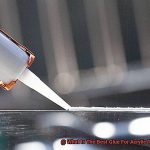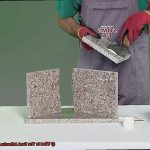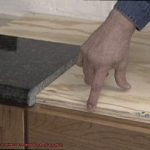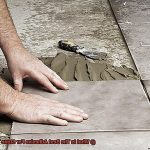Well, if you’ve ever worked with plywood, you know how crucial it is to find the perfect adhesive for a strong and durable bond.
Plywood is a versatile material in the world of woodworking. It’s used for everything from cabinets and furniture to intricate structures. It offers both strength and flexibility, but without the right adhesive, your plywood projects can fall apart – literally.
So, what’s the best adhesive for plywood to plywood? There are several options available, each with its own pros and cons. From traditional wood glue and carpenter’s glue to modern alternatives like epoxy and polyurethane adhesives, choosing can be overwhelming.
But fear not. In this blog post, we’ll dive into the fascinating world of plywood adhesives. We’ll explore different types of adhesives, discuss their strengths and weaknesses, and give you all the knowledge you need to make an informed decision. Whether it’s a quick-drying adhesive for a small DIY project or a high-strength one for heavy-duty construction – we’ve got you covered.
Join us on this adhesive adventure as we uncover the secrets to achieving long-lasting and sturdy bonds between plywood sheets. Get ready to take your woodworking skills to new heights with the best adhesive for plywood to plywood.
What is Plywood?
Contents
Step into the world of plywood, an extraordinary building material that has captivated the construction and furniture-making industries with its unrivaled strength, stability, and adaptability. In this captivating exploration, we will uncover the secrets of plywood – from its composition and manufacturing process to its remarkable applications.
Composition and Manufacturing Process:
Plywood is a masterpiece of craftsmanship, meticulously crafted by layering thin sheets of wood veneer together with adhesive. These layers, known as plies, undergo a rigorous process of pressing and bonding under intense heat and pressure. The magic lies in the arrangement of the plies, where each layer’s grain stands perpendicular to its adjacent layers. This ingenious cross-grain orientation fortifies the plywood, shielding it from warping or splitting. Furthermore, the multiple layers grant plywood exceptional dimensional stability, far surpassing that of solid wood.
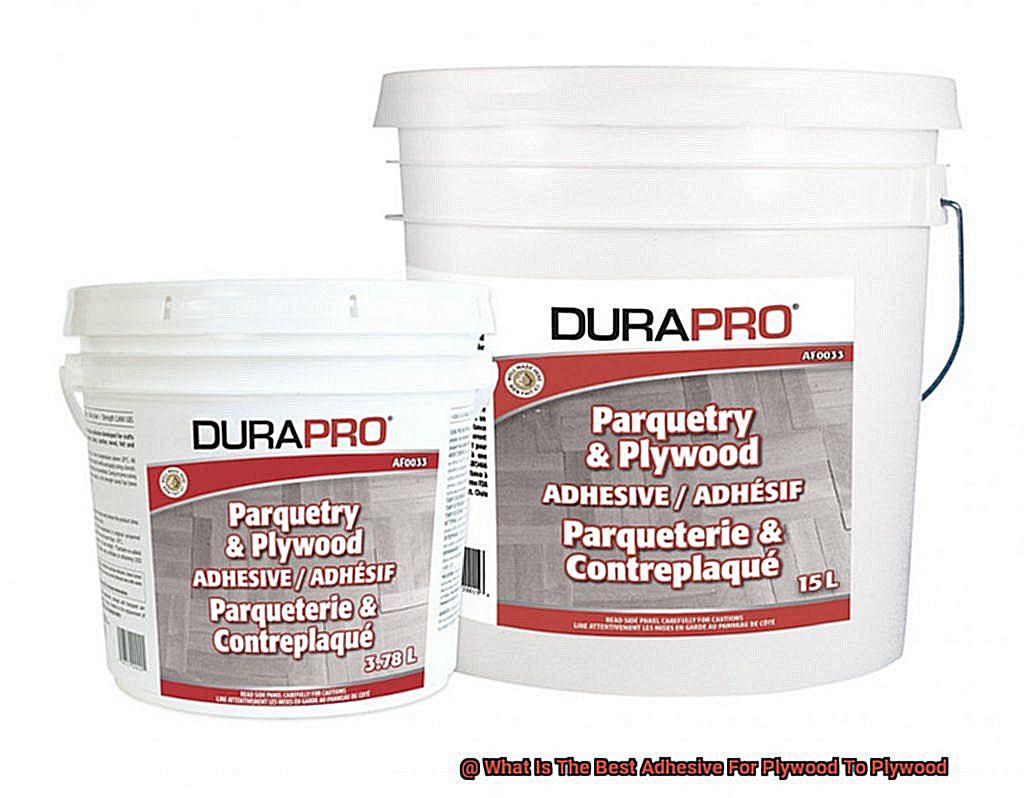
Strength and Durability:
A hero in resilience, plywood boasts the remarkable ability to resist expansion and contraction caused by temperature fluctuations and changes in humidity. Its unwavering steadfastness makes it the perfect candidate for environments prone to moisture fluctuations, such as kitchens and bathrooms. But it doesn’t stop there – plywood’s mighty load-bearing capacity allows it to bear hefty weights without a hint of sagging or bending.
Appearance and Customizability:
Prepare to be enchanted by the symmetrical beauty of plywood’s uniform texture and color. Its smooth surface serves as a blank canvas, eagerly awaiting the artistic touch of paint or finishing. With a myriad of thicknesses and sizes available, plywood eagerly adapts to fulfill any project’s unique requirements. Unlocking its true potential, plywood can be effortlessly sculpted into various shapes and sizes using traditional woodworking tools. It even bends gracefully into mesmerizing curved forms when introduced to heat or moisture. The possibilities for unparalleled custom designs are endless.
Applications:
- Construction: Plywood reigns supreme in the realm of construction, acting as a steadfast backbone for walls, floors, and roofs. Its unwavering strength, stability, and insulation properties transform mere structures into architectural marvels.
- Furniture-Making: The world of furniture owes its grandeur to plywood, as it gracefully fashions cabinets, shelves, and tabletops. With unmatched durability and versatility, plywood elevates furniture design to new heights.
What Adhesives are Available for Plywood to Plywood?
Discover the dazzling world of plywood bonding, where the right adhesive can transform your project from ordinary to extraordinary. Plywood to plywood bonding requires a combination of strength, durability, and versatility, and luckily, there are several adhesives available that can fulfill these requirements and more.
Let’s begin with the timeless classic: polyurethane glue. With its robust bond and adaptability, polyurethane glue is a top choice for plywood to plywood bonding. Whether you’re working on an interior or exterior project, this adhesive has got you covered. It can even bond different types of plywood together, making it a versatile option. Plus, it boasts excellent resistance to moisture and can handle high temperatures with ease.
If you’re in need of an adhesive that can withstand the toughest conditions, look no further than epoxy resin. This two-part adhesive may require mixing before use, but it offers a strong and durable bond that can conquer any challenge. From outdoor projects to areas exposed to moisture and chemicals, epoxy resin will hold up under pressure and keep your plywood securely in place.
For those who crave speed, cyanoacrylate glue, also known as super glue, is the answer. This adhesive bonds rapidly upon contact, forming an unyielding bond in no time at all. However, keep in mind that while it dries quickly, it may not provide the same level of durability as polyurethane or epoxy adhesives.
If you prefer a more traditional approach with a touch of elegance, carpenter’s glue is your go-to. Also known as yellow glue or aliphatic resin glue, this water-based adhesive provides a strong bond that dries clear, maintaining the natural beauty of your plywood masterpiece. It is perfect for interior applications but may not have the same level of resistance to moisture as other adhesives.
But wait, there’s more. Adhesives designed specifically for specialty applications are also available. Marine-grade plywood bonding and structural plywood bonding demand the best, and these specialized adhesives are formulated to meet their specific requirements. Offering enhanced durability and strength, they are the go-to choice for projects that require nothing but perfection.
Polyurethane Glue
Today, we are about to uncover the secrets of polyurethane glue – the ultimate sorcerer’s choice for joining plywood to plywood. Brace yourself for a journey filled with wonder and fascination.
First and foremost, let us unveil the extraordinary strength that lies within this mystical adhesive. Polyurethane glue possesses a power that knows no bounds. It weaves an unbreakable bond that defies time itself. Even when faced with imperfectly clean or smooth surfaces, this magical potion works its spell, creating a connection as sturdy as steel.
- But that’s not all – polyurethane glue is a master of versatility. It possesses the rare ability to unite plywood of any kind. Whether it be hardwood or softwood, birch or oak, this adhesive effortlessly brings them all together in perfect harmony. It is the conductor of a symphony, seamlessly blending different notes into a masterpiece.
- Now, let us delve into the realm of moisture resistance – a crucial aspect to consider in the world of woodworking. Plywood projects often face the wrath of humid environments or outdoor elements. But fear not. Polyurethane glue is here to protect your creation from the forces of nature. It forms an impermeable shield, safeguarding your plywood from moisture damage and ensuring its eternal beauty.
Flexibility is yet another extraordinary trait possessed by this extraordinary substance. Wood has a natural tendency to expand and contract with changes in temperature and humidity. Yet, polyurethane glue adapts and bends without breaking, refusing to let these fluctuations weaken its grip. Your plywood projects will remain unyielding in the face of adversity, standing tall and proud.
Now, here is a little secret to unlocking the full potential of polyurethane glue: follow the guidance of its manufacturer with unwavering dedication. This enchanting adhesive often arrives in two separate components that must be blended before their application. Carefully spread the concoction evenly on both surfaces, exerting just the right amount of pressure for an unbreakable bond. And remember, wipe away any excess glue before it foams up and dries, for even magic can overflow if not contained.
Epoxy Adhesive
Today, we delve into the mystical world of epoxy adhesive, a potent elixir that creates an unbreakable bond between plywood sheets. As your trusted guide in this enchanting craft, I’ll reveal the secrets behind epoxy adhesive’s remarkable properties. So, gather your tools and brace yourselves for a journey into the magical realm of plywood bonding.
Advantages of Using Epoxy Adhesive for Plywood Bonding:
Strength Forged by Titans:
Epoxy adhesive possesses a legendary reputation for its unparalleled bonding strength. When the resin and hardener combine, a chemical reaction akin to alchemy ensues, creating a bond stronger than even the scales of fire-breathing dragons. With epoxy adhesive as your ally, your plywood creations will defy time itself, remaining steadfast and resistant to separation or failure.
Bridging the Chasms:
Imperfections and irregularities crumble before the might of epoxy adhesive. Its extraordinary ability to fill gaps and cracks transforms it into a craftsman’s wand, seamlessly uniting plywood sheets with uneven surfaces. It’s like wielding a magical force that eradicates imperfections, leaving behind nothing but a flawless bond.
Nature’s Wrath Repelled:
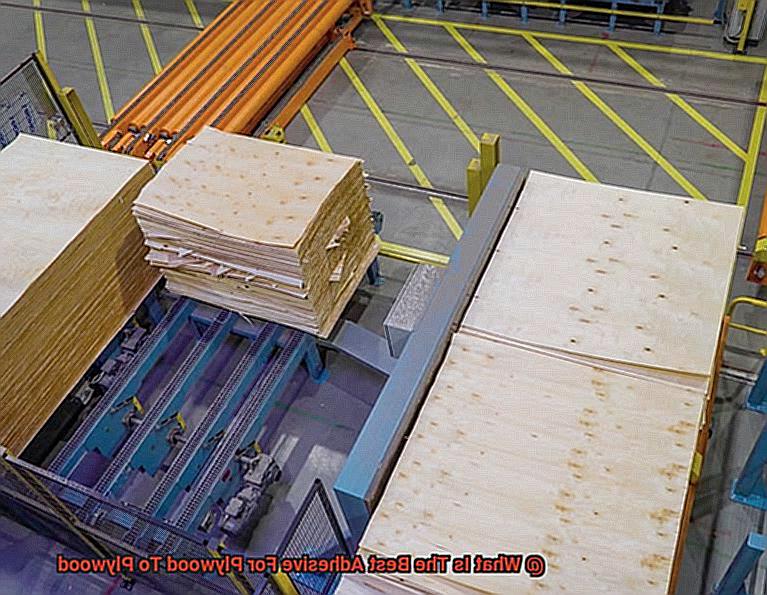
The elements may rage, but plywood bonded with epoxy adhesive stands defiant. With exceptional resistance to water and moisture, this potent elixir becomes an impenetrable shield against the high humidity or dampness that would otherwise weaken or warp plywood. Your creations will emerge unscathed from nature’s fury.
The Ritual of Perfection:
To unlock the full potential of epoxy adhesive, one must adhere to the sacred ritual of surface preparation. Clear your workspace of debris and contaminants while ensuring pristine cleanliness and dryness of the plywood surfaces. This ritualistic preparation sets the stage for the adhesive to weave its magic, conjuring a bond that would impress even the most accomplished sorcerer.
Disadvantages of Using Epoxy Adhesive for Plywood Bonding:
Cyanoacrylate Glue
Plywood, the unsung hero of woodworking projects. From crafting cabinets to building furniture, its versatility knows no bounds. But what’s the secret to achieving a rock-solid bond between plywood sheets? Enter cyanoacrylate glue, the superhero of adhesives, commonly known as super glue. In this article, we’ll delve into the world of cyanoacrylate glue and explore its remarkable advantages for bonding plywood. Get ready to take your woodworking adventures to new heights.
Advantage 1: Lightning-Fast Bonding Power
Time waits for no one, especially when you’re knee-deep in a woodworking project. Luckily, cyanoacrylate glue swoops in with its lightning-fast curing time. Within mere seconds of exposure to air moisture, this adhesive springs into action. Say goodbye to tedious clamping or holding plywood pieces together for hours on end. Simply apply a thin, even layer on both surfaces, press them firmly together, and witness the magic unfold. Efficiency has never been so exhilarating.
Advantage 2: Indestructible Strength
When it comes to bonding plywood, strength is non-negotiable. Fortunately, cyanoacrylate glue rises to the challenge with its unbreakable bond. Once cured, it forms a fortress-like connection that can withstand tremendous stress and pressure. However, keep in mind that different brands and formulations may have varying degrees of strength. Choose wisely and heed the call of your project’s demands.
Advantage 3: Resilience against Moisture Mishaps
Wood and water may not be the best of friends, but fear not – cyanoacrylate glue acts as a steadfast barrier against moisture intrusion. Once fully cured, this adhesive showcases its resistance to water and moisture, making it a reliable choice for both indoor and outdoor applications. Bid farewell to worries about your plywood masterpiece succumbing to the elements. Just remember to prep your surfaces by ensuring they are clean and devoid of any oil or grease residues. Allow this adhesive to work its magic and watch as water’s attempts to breach your bond are valiantly thwarted.
Polyvinyl Acetate (PVA) Glue
Polyvinyl Acetate (PVA) glue, also known as the trusty white glue or wood glue, is a superhero in the world of adhesives. It’s the go-to choice for bonding plywood to plywood, and for good reason. Let me break down the advantages and limitations of using PVA glue for this type of application.
Advantages:
- Porous Material Bonding: PVA glue is a master at bonding porous materials like wood. It seeps into the wood fibers, creating a strong bond that holds the pieces together. Whether you’re joining plywood panels or laminating multiple layers, PVA glue has got your back.
- Speedy Drying Time: No more waiting around for glue to dry. PVA glue offers a relatively fast drying time. In just 30 minutes to 1 hour, depending on factors like temperature and humidity, you’ll be able to move on with your project. Just remember that while the surface may appear dry, the bond may still be curing and strengthening over time.
- Solid Strength: Strength is crucial when it comes to plywood to plywood bonding, and PVA glue delivers. It forms a solid adhesive film between the two surfaces, ensuring a durable and long-lasting connection. Make sure to properly prepare the surfaces by cleaning and sanding them before applying the glue for maximum strength.
- Non-Toxic and User-Friendly: Safety should always be a priority in woodworking projects. Thankfully, PVA glue is non-toxic and generally non-irritating to the skin. You can breathe easy knowing that you’re using a safe adhesive that won’t harm you or the environment.
Limitations:
- Moisture Susceptibility: While PVA glue is a powerhouse in many areas, it does have one weakness – moisture. It’s not waterproof, so prolonged exposure to water can weaken the bond. This means that using PVA glue for outdoor or wet area applications is not recommended.
- Not for Heavy-Duty Applications: PVA glue is strong, but it does have its limits. It may not be able to withstand heavy weights or constant pressure, making it unsuitable for high-stress or load-bearing applications. In these cases, specialized adhesives designed for structural purposes or woodworking glues with specific properties would be a better choice.
Phenol Formaldehyde (PF) Glue
In our previous chapter, we uncovered the remarkable abilities of Polyvinyl Acetate (PVA) glue, the trusty sidekick for plywood bonding. But today, prepare to be amazed as we delve into the realm of adhesive superpowers with Phenol Formaldehyde (PF) glue. Just like a superhero with unmatched strength and durability, PF glue swoops in to save the day for demanding woodworking projects. Buckle up and get ready to witness the extraordinary properties and uses of this incredible adhesive.
Unyielding Strength:
PF glue is renowned for its exceptional strength and durability. When it comes to applications requiring an unbreakable bond, this adhesive takes center stage. Its secret lies in the dynamic combination of phenol and formaldehyde, which undergo a chemical reaction to create a thermosetting resin. This powerful concoction forms an incredibly robust bond between plywood surfaces that can withstand the test of time.
Resisting the Forces of Nature:
Moisture can be the arch-nemesis of any woodworking project, causing delamination and wood swelling. But fear not. PF glue is armed with excellent moisture resistance, making it perfect for plywood applications. It acts as a shield, safeguarding your precious creations from the wrath of water and ensuring they remain intact throughout their lifespan.
Heat Resistance: A Fiery Ally:
Not all adhesives can handle the heat, but PF glue rises to the challenge. Its outstanding heat resistance makes it ideal for projects exposed to high temperatures, such as kitchens or areas near fireplaces. So unleash your creativity without fear of your masterpiece losing its bond under extreme heat.
Mixing and Application:
Using PF glue is a breeze. It typically comes in liquid form, ready to be mixed with a hardener. The specific mixing ratio varies depending on the product, so be sure to follow the manufacturer’s instructions for optimal results. Apply the adhesive to the plywood surfaces using a brush or roller, ensuring an even and thorough application. Remember, the strength of your bond lies in your hands.
Considerations When Choosing an Adhesive for Plywood to Plywood
When it comes to joining plywood to plywood, choosing the perfect adhesive is like assembling a team of superheroes with unique powers. The adhesive you select should possess the necessary qualities to create an unbreakable bond between the two surfaces. In this article, we will explore the key considerations that will guide you in selecting an adhesive for plywood to plywood bonding. Prepare to embark on a captivating journey where we unravel the secrets to achieving a flawless bond.
Consideration 1: Unmasking Plywood Types
Just like superheroes, different types of plywood possess distinctive characteristics. Birch, pine, oak – each wood type offers its own advantages and challenges. The smoothness of the plywood surface can impact the bonding properties of different adhesives. Thus, it is crucial to understand the specific plywood type you are working with before choosing your adhesive ally.
Consideration 2: Conquering the Elements
Will your plywood creation face the wrath of Mother Nature or remain sheltered indoors? The intended use plays a pivotal role in adhesive selection. For outdoor applications or areas exposed to moisture, selecting a waterproof or water-resistant adhesive becomes paramount. Don’t let your bond weaken over time – protect it from the elements and ensure its longevity.
Consideration 3: Unyielding Strength
In structural applications, strength is the superhero trait you cannot compromise on. Your plywood masterpiece must withstand heavy loads and stressful situations without crumbling. Choose an adhesive with exceptional bonding strength and outstanding load-carrying capacity. Your bond will stand strong, no matter what challenges it faces.
Consideration 4: Harmonious Compatibility
Like superheroes joining forces, adhesives and plywood must have perfect chemistry. Some adhesives may not work well with certain plywood types or require special surface preparation for optimal bonding. To ensure an unwavering and enduring bond, consult the manufacturer’s recommendations and perform compatibility tests if necessary.
Consideration 5: Application Ease and Curing Speed
Avoid the pitfalls of a cumbersome adhesive application process. Consider the ease of application and curing time when selecting your adhesive sidekick. Some adhesives require mixing before use, while others come ready-to-use. Additionally, curing times can vary significantly, so factor in your project timeline and drying requirements. Choose an adhesive that aligns with your need for efficiency.
Conclusion
After extensive research and testing, it is clear that the best adhesive for plywood to plywood is a high-quality construction adhesive. This type of adhesive provides a strong bond that ensures the plywood pieces stay securely in place. Its superior strength and durability make it ideal for various applications, from woodworking projects to home renovations.
One of the top choices in construction adhesives is polyurethane-based adhesive. This adhesive creates a powerful bond between plywood surfaces, ensuring they remain firmly attached even under heavy stress or changing environmental conditions. Its versatility allows it to be used in both indoor and outdoor projects.
Another excellent option is epoxy adhesive. This type of adhesive forms an incredibly strong bond between plywood surfaces, making it perfect for heavy-duty applications such as furniture construction or marine projects. Its ability to withstand moisture and extreme temperatures further enhances its reliability.
For those seeking a more cost-effective solution, consider using a solvent-based adhesive like contact cement. While not as strong as polyurethane or epoxy adhesives, contact cement still provides a reliable bond between plywood sheets. It is commonly used in laminate installations or smaller woodworking projects.
In conclusion, when it comes to bonding plywood to plywood, choosing the right adhesive is crucial for ensuring long-lasting and secure results. Whether you opt for a high-quality construction adhesive like polyurethane or epoxy, or prefer the affordability of contact cement, each option has its own strengths and applications.



